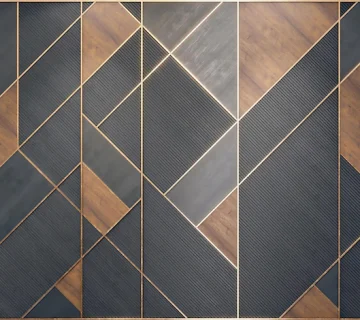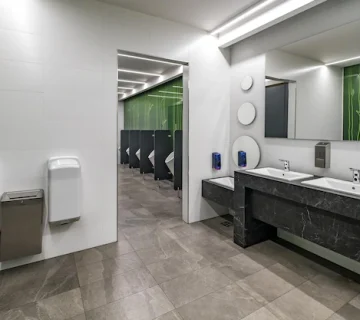Ceramic toilet refers to toilet accessories that are mainly made of ceramic materials. This type of toilet is a popular choice for bathrooms due to its durability, versatility and aesthetic appeal. The term “ceramic” refers to the material used in the construction of the toilet, which is typically a type of clay that is fired at high temperatures to create a hard and durable surface.
Ceramic toilets come in a variety of styles, shapes and designs to suit your bathroom preferences and aesthetics. The ceramic material used in toilets is known for its smooth and non-porous surface, which makes it easy to clean and maintain. In addition, ceramic toilets are stain resistant and give the bathroom a shiny and polished look.
If you are looking to buy a ceramic toilet, you can explore our collection on our website. Our collection stands out as one of the best ceramic distributors and offers a wide range of ceramic toilets in different styles, colors and sizes. With a commitment to quality, expert guidance and a customer-centric approach, we strive to provide an unparalleled shopping experience for your bathroom remodeling or upgrade needs. Visit our website to discover the perfect ceramic toilet that combines function and style for your bathroom space.

Understanding the Types of Toilet Ceramics
Toilet ceramics come in various types, each offering unique features and designs to cater to different preferences and needs. Let’s explore the diverse world of toilet ceramics and the characteristics that distinguish them:
- Two-Piece Toilets
– Description: Two-piece toilets consist of a separate bowl and tank, connected by bolts. This is the most common type of toilet.
– Pros: Easy to install, cost-effective, and replacement parts are readily available.
– Cons: May have more crevices, making cleaning a bit challenging.
- One-Piece Toilets
– Description: One-piece toilets feature a seamless design with the bowl and tank fused together. They often have a sleek and modern appearance.
– Pros: Easier to clean, sleek design, and potentially less prone to leaks.
– Cons: Usually more expensive than two-piece toilets.
- Wall-Mounted Toilets
– Description: Wall-mounted toilets are affixed to the wall, with the tank concealed within the wall. They often have a floating appearance.
– Pros: Modern and space-saving design, easy to clean the floor beneath.
– Cons: Installation can be more complex, and repairs may require access to the wall.
- Corner Toilets
– Description: Corner toilets are designed to fit into corners, making them ideal for smaller bathrooms or unique layouts.
– Pros: Space-efficient, can maximize corner spaces effectively.
– Cons: Limited design options, may have a smaller tank capacity.
- Smart Toilets
– Description: Smart toilets integrate technology for added features such as bidet functions, heated seats, and touchless flushing.
– Pros: Enhanced functionality, improved hygiene, and customizable features.
– Cons: Higher cost, potential for technical malfunctions.
- Elongated Bowl Toilets
– Description: Elongated bowl toilets have an oval-shaped bowl, providing extra comfort and space.
– Pros: More comfortable seating, suitable for larger bathrooms.
– Cons: May require more space than round bowl toilets.
- Round Bowl Toilets
– Description: Round bowl toilets have a circular bowl shape, making them suitable for smaller bathrooms.
– Pros: Space-efficient, often more budget-friendly.
– Cons: Seating may be less comfortable for some individuals.
- Compact Toilets
– Description: Compact toilets are designed for smaller spaces, with a shorter bowl and tank.
– Pros: Ideal for tight spaces, can be a space-saving solution.
– Cons: May have a smaller tank capacity.
- Comfort-Height Toilets
– Description: Comfort-height toilets, also known as ADA-compliant toilets, have a taller bowl for easier sitting and standing.
– Pros: More accessible for individuals with mobility challenges, comfortable for most users.
– Cons: May not be suitable for shorter individuals or children.
- Dual-Flush Toilets
– Description: Dual-flush toilets offer two flushing options, typically for liquid and solid waste, promoting water conservation.
– Pros: Water-efficient, environmentally friendly.
– Cons: Initial cost may be higher, but potential long-term savings on water bills.
- Ceramic Materials
– Description: Toilet ceramics are primarily made of vitreous china or ceramic materials. Vitreous china is durable, glossy, and resistant to stains and scratches.
– Pros: Durable, easy to clean, and aesthetically pleasing.
– Cons: Can chip or crack under heavy impact.
Understanding these various types of toilet ceramics allows you to make an informed decision based on your bathroom space, preferences, and specific needs. Whether you prioritize space-saving designs, modern aesthetics, or advanced technology, the diverse options in toilet ceramics ensure there’s a perfect fit for every bathroom.

Prolonging the Life of Your Ceramic Toilet: Maintenance Tips
Maintaining a ceramic toilet properly can significantly extend its lifespan, ensuring reliable performance and minimizing the need for repairs or replacements. Here’s a comprehensive guide on how to increase the life of your ceramic toilet:
- Regular Cleaning
– Why: Regular cleaning prevents the build-up of stains, mineral deposits, and bacteria, maintaining the appearance and functionality of the toilet.
– How: Clean the bowl, tank, and external surfaces with a non-abrasive cleaner or a mixture of vinegar and water. Pay attention to hidden areas like rim holes and under the rim.
- Use Gentle Cleaners
– Why: Harsh chemical cleaners can damage the glaze and internal components of the toilet over time.
– How: Opt for non-abrasive and non-corrosive cleaners to protect the ceramic surface. Natural cleaning solutions like vinegar and baking soda can be effective.
- Address Hard Water Issues
– Why: Hard water can lead to mineral deposits and stains, affecting both the appearance and performance of the toilet.
– How: Use vinegar or a dedicated hard water stain remover to dissolve and remove deposits. Regularly clean rim holes and jets to prevent clogs.
- Inspect and Replace Worn Parts
– Why: Worn-out components like flappers, fill valves, and seals can lead to leaks and reduced efficiency.
– How: Periodically inspect and replace any parts showing signs of wear. This proactive approach prevents more significant issues down the line.
- Regularly Check for Leaks
– Why: Leaks can waste water and cause damage to the floor and surrounding areas.
– How: Regularly inspect the toilet for any signs of leaks. Check for water around the base, near the tank, and at connection points. Address leaks promptly.
- Avoid Hanging Heavy Items
– Why: Excessive weight on the tank or lever can strain the toilet structure over time.
– How: Avoid hanging heavy items like towels or bathrobes on the toilet tank or lever. Use hooks or bars for such items instead.
- Proper Installation and Sealing
– Why: Improper installation or a faulty seal can lead to instability, leaks, and potential damage.
– How: Ensure the toilet is correctly installed, and seals and gaskets are in good condition. Tighten bolts and connections periodically.
- Manage Toilet Tank Water Level
– Why: An incorrect water level in the tank can affect flushing efficiency and lead to issues.
– How: Adjust the water level in the tank to the manufacturer’s recommended level. This ensures proper flushing without wasting excess water.
- Prevent Damage During Cleaning
– Why: Using abrasive tools or harsh materials during cleaning can scratch or damage the ceramic surface.
– How: Use soft-bristle brushes or sponges to clean the toilet bowl. Avoid abrasive materials that can scratch the surface.

- Avoid Over-Tightening
– Why: Over-tightening bolts and connections can lead to damage.
– How: When securing bolts or connections, tighten them evenly and avoid excessive force. Follow manufacturer guidelines for installation.
- Keep the Flushing System in Check
– Why: Malfunctions in the flushing system can lead to inefficiency and potential water wastage.
– How: Regularly check the flush valve, flapper, and other components for any issues. Clean and replace parts as needed.
- Prevent Impact and Physical Damage
– Why: Heavy impacts can lead to chips, cracks, or structural damage to the ceramic.
– How: Be cautious when moving heavy objects in the bathroom, and avoid impacting the toilet structure. Educate household members about proper toilet use.
- Educate Users
– Why: Proper use and care by all household members contribute to the toilet’s longevity.
– How: Educate users on appropriate flushing practices, avoiding the use of excessive toilet paper, and reporting any issues promptly.
- Follow Manufacturer’s Recommendations
– Why: Manufacturers provide guidelines for installation, cleaning, and maintenance to ensure optimal performance.
– How: Adhere to the manufacturer’s recommendations for installation, cleaning products, and maintenance schedules. This ensures that you’re taking the right steps for your specific toilet model.
- Schedule Professional Inspections
– Why: Periodic professional inspections can catch potential issues early and provide expert insights.
– How: Consider scheduling occasional inspections by a plumber to assess the overall condition of your toilet and address any emerging problems.
By incorporating these maintenance tips into your routine, you can significantly increase the lifespan of your ceramic toilet, ensuring it remains a reliable and efficient fixture in your bathroom for years to come.




No comment